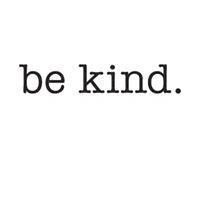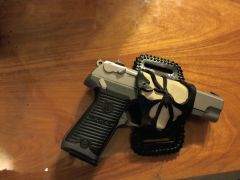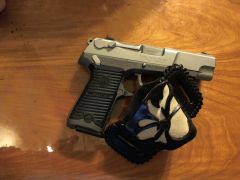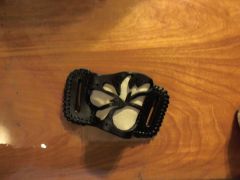-
Posts
53 -
Joined
-
Last visited
Content Type
Profiles
Forums
Events
Blogs
Gallery
Everything posted by JC Javelle
-
From the album: Holsters
-
-
From the album: Holsters
-
From the album: Holsters
-
I'm currently making one out of some 5 oz leather. Can't say I wouldn't mind some thinner stuff.
-
I can see how that would be confusing. I don't remember the grain on these sides, only that it was really soft and supple (like a good bridle or pair of chaps that is well worn and well oiled). It was a dark brown, definitely soaked in oil (was warned about it staining), that turned lighter where it was bent. The leather was about a 5 oz weight too.
-
"This yankee don't like country and yet likes the sound of this..." You've done a good job, I hope to see it finished [and maybe recorded...?]!!
-
I have been looking and looking, and I cannot find the pattern or instructions for a cowboy hat (aside from a website charging $40 for a video). I could wing it, but I don't know the measurements or size ratio to make one. I want to make one out of leather similar to this style: (Yes, I realize the one in the picture is made of straw.) Anyone have something to share? Much appreciated, Jessica PS: I have my ideas, but shared brainstorming would be nice. For the top, I was figuring one piece, maybe two. Would the brim be made with one or two layers (two so the underside could be tooled maybe)? How would you edge the brim?
-
I stopped by my local Tandys today on my way home from work. They've some new hides laid out, including a Mustang Oil Side. It's a medium brown, turns light when you fold it, and is so so soooo soft. WANT!!!!! How is oil hide made? I assume it is just leather that has been coated in oil repeatedly, but is it dipped in hot oil? Is it hand coated repeatedly until it just gets that soft? How is it done? Because this stuff is just THAT soft... I want it! Can't afford it, but I want it. Making my own [cowboy] hat out of this stuff would be awesome.
-
I just completed my first holster this past weekend. I molded it before I dyed it (you can dye it before you mold too), using water based dyes. The only trouble that I had, was that when I molded it, I had sewn the two pieces of leather together with wax thread. I dyed the holster after I molded it, taking the two pieces apart to dye individually. After the dyes had dried, I had noticed specks. I believe the wax from the thread had rubbed into the leather, leaving pin sized specks of veg tan showing through where my dye had not grabbed the leather (I tried dying over those spots, and it didn't work). Maybe because I used a dark brown dye, quite liberally, I haven't noticed any uneven splotches otherwise. Now, I know I am supposed to seal it with a finish (I haven't yet). If I don't, it is likely that the dye will stain or ruin if it gets wet. But I am considering playing with the holster and maybe try removing some of the dye before I do seal it. It's an experiment piece.
-
Are you looking for just a polish? Or are you looking for an "after care" condition to reapply when you see fit?
-

Where's The Quality In "custom" Gone
JC Javelle replied to Chief31794's topic in Leatherwork Conversation
An artist and craftsman is their own worst enemy. I have thrown away tons of work (drawings, paintings, clay work, wire work, etc) because I knew it was crap according to my own standards. I get ribbed and and whined at, "oh why did you throw it away? you do such good work!" Horse manure. If it isn't up to your own standards, it isn't worth keeping, never mind selling or giving away. Now, standards vary. Some artists and craftsman have a bit of a perfectionist streak going on, so anything below the best of their ability or better isn't worth anything. Others, if it got done without looking like a train wreck then it is good enough. Now, what the customer wishes to buy, the best that the artist can offer, or the stuff that just gets them by, is up to the customers discretion. Quality, like beauty, is as much in the eye of the beholder as it is the craftsman. We live in a throw away society. Handmade is good enough to many who are used to the sub par; ie. a pair of boots lasting them the year, maybe two, is good enough. Never mind those boots that can last you the decade and feel more comfortable the older and more worn they become. People don't see that spending the big chunk of change the first time will save them money in the long run. Or they do, and they just don't care. I for one, like something that lasts. I typically don't like buying damaged product. But, occasionally, I do. Why? Personification. I am my own worst critic, and it shows when I buy mass produced stuff. I see those little scuffs and marks, and I always have an internal debate, oh the manufacturer could have trimmed that excess, oh they could have done this, that, and your mother. But when I come across something hand made and one of a few, sometimes, those imperfections bring something else to the board. A bit of uniqueness and personality that makes it one of a kind. Sort of like with people. So what if they have some underlying issues and obvious imperfections, scars, bumps, bruises. Would you take them any other way? Maybe. Would you take them as is, right now, regardless? Yes. As for the OP, it feels like a vent. And if you read or listen to enough vents, you know they come from a place where you don't care about faux pas or being politically correct. You're venting and complaining about every little molecule in the issue. You just don't care otherwise. -
Are the Al Stohlman Encyclopedias of Saddle Making good books? Are they detailed? Are they worth the expense (my price is 60.00 ea through Tandys)? Are there better books on the subject? I find 180.00 plus quite the investment for three books. I want to make sure they are worth it before I nosedive. Thank you, Jessica
-
Haha Katsass. I have a lifetime (short though it may be!) background in art. There is not much I haven't touched on. Leather is just the new medium, and the first art I've touched in about 3 to 4 years now. When I get the hang of it and can work it without consternation...I'll set my eyes on welding. But yes, I know. Everyone has their own method, every little detail is different. How to hold the utensil, how to move it, turn it. It's like writing, everyone has their own way to stroke the pen. My problem, I have to actually be shown the steps, and then I have to be made to do it as I have been shown. I can pick things up so easily that way. But I have no one to show me the details in leather, so I actually do have to make it up as I go. I have no way to visualize how to do it either. So the different steps I hear, I pick what sounds most comfortable to me and to how I am used to working. I take what sounds the "easiest" or smoothest way to do it, to how I am used to doing things, and then I try to make it work. If not, I'll ask again. I can be a pest when it comes to questions, and can ask a question 10 different ways until I get the answer I am satisfied with. I am ordering a catalog from Springfield right now! I swear. Tandys, hell I got lucky. Tandys is right down the street from me, by what, some 7 or 8 blocks I think? Sometimes it is just better to take the short drive or bike ride there. Much more entertaining too. I can touch and smell the leather then. As for dry.. haha. We had a good two weeks of solid sun without a single hint of a rain cloud. Dried up real quick over here. And now we get severe thunderstorms that are so short they can't even cool the temperature at all. Usually it's hot, hot, hot, massive down pouring of rain, and then a day or two of cool before the hot comes back. Rinse, repeat. Memphis is usually fairly predictable that way. Usually. Lately it's been in the 90's, with a severe thunderstorm warnings in the afternoon that brings short, heavy bouts of rain, sometimes with hail (hail in 90 degree weather! haha!). It'll be dry before the day is out sometimes. This last burst of rain for 4 days this week? Dry by Thursday. Dusty by Friday. BillB, my example of the stained glass was to give the impression of what I meant by the leather in my design being thin and in between the design cutouts. That is all I meant by the stained glass. My suede is being laid behind the design by being glued and sewn to the back of the leather.
-
Thanks Katsass. I guess I will give this project a go soon and see how I do; probably this weekend if nothing comes up. I was really hoping to dye my lace, but I guess I should worry about dying my leather first before lacing so I can try to match the color or decide on a preset color. I really don't want to mess up. But hey, it is, in the end, a practice piece. Hopefully I can get my scanner or camera up and running soon so I can take pictures too. Thank you again for the tips Kats. I really appreciate it.
-
Alrighty, clarification is hopefully on its way! I left work early enough today to manage to make it to my local Tandys in order to ask questions and clarify how to do what I want to do. So hopefully I can explain it here more clearly now, as well as ask more questions. I did not know that what I am planning to do is in fact called filigree. Please forgive my error. The picture that I have patterned for my holster is to be cutout. It is not one a solid silhouette. Think of stained glass, with the iron pieces being the outline holding the glass together. I wanted to know if the pieces of leather (imagine the iron) that would be in between my cutouts were going to be to thin (some spots were, but that can be fixed by cutting it thicker than it has been traced onto the leather). I also wanted to know if I had to sew along those thing pieces that would be left in between the cutouts, or could I just glue/weld them. I was told gluing/welding would suffice. As this piece is to be a holster, I also wanted to know in what order I should do things (cut first, mold first, etc). I was told to cut out my pattern and then mold the leather to my gun. After molding, then I could lay the material I chose as my background (my suede) so it would conform to the curves of the leather. Understand? Now, more questions. I wanted to know what kind of punch I should use for the string that I will use to sew my suede to my leather? I was told today at Tandys, as I was looking for a punch to use with imperial lace, but I forgot and did not consider it until now. Also, what kind of string should I use (wax string, etc)? Hopefully, for now, last question: I was thinking of lacing the outside edges of my holster with the imperial lace that I have. Can I dye imperial lace (it is a natural veg tan color) to match my dyed leather? I hope I cleared up the confusion. Sorry! And thanks again, Jessica PS: Katsass, the picture of the first holster in your post is what inspired me to try filigree/inlays. It's a really beautiful piece.
-
Help, help, help! Lol. Alright, I have a vague pattern of a hyacinth that I have transferred to my pre-cut leather holster piece. It's a flower with the petals in separate chunks. I would like to do a suede inlay. How do I know if the pattern is to tight to do an inlay? Like, when does the pattern (the petals) come to close to itself in the cutout that I should worry about ripping or sewing? I was considering only sewing the outside edges of the pattern, as I likely do not have the room to sew inside of it, but do I need to sew inside of it? Will glue/cement suffice? I am trying to scan my drawing of the design (accurate and to scale with the holster outline and punch holes), however as of this moment, my printer/scanner is not cooperating. I am trying to fix that.... Also, should I mold the leather before I cut the design out? Should I mold it with the suede or lay the suede in afterwards? This is just a showy piece I am experimenting with for me. It isn't really meant to be a functioning carry holster. Thank you in advanced, Jessica
-

Properly Stropping Swivel Knife/ Learning Proper Technique
JC Javelle replied to LilRay's topic in How Do I Do That?
You do have to be careful how you pick the blade up to pevent from rolling the tip. I don't know if leather is such a bad idea for stropping, particularly if you pull the blade lightly. It takes longer, but you shave off less each pass and any mistake isn't as deep. I tried putting the rouge on cardboard, and I dunno if my stick was to hard or what, but it was tearing the cardboard up! From a beginners stand point, I am teaching myself to strope by feel. I lay the blade against the leather and put a gentle pull pressure on the blade, not quite enough to move it. Then I roll the blade until I feel it go from a rough drag to a smooth drag. I can feel the coating on the blade, it feels rough, like tiny vibrations when the blade is pulled. I can lean it forward until that pull feels smooth. That's when I know I am stroping right. I use Tandy's steel blade's, and if you have a good eye, you can just look at them and see how rounded they are. Using the light reflection on the blade is easiest to tell how badly curved it is. A smooth, uncurved blade looks like a polish surface that lights up entirely. Curved blades you see lines of light, and the entire surface doesn't light up at all. If you have a really, really good eye, you can see a "third" surface on the edge/point of the blade.Stroping, in my experience, is a slow but measured method to polish/sand/grind/cut down two surfaces of metal until they meet at a perfectly sharp, crisp edge. Which is why you strope both surfaces equally, so you do not polish down one surface so far as to crook your blade. My $0.02. -
That is a monster! I was just wondering how I am going to support my 23 1/2" x 15 1/2" x 1 1/8" granite piece. Craigslist is starting to sound like a good place to search!
-
I have an entire length of cow belly to play with, so I am not worried about perfection. I know it won't be my finest piece of art work. So winging it I am. I have just a couple more tools to collect before I start, but I'll try to post results as I go. Anyone else feel free to keep posting comments, suggestions, technique, etc. 'Tis appreciated.
-
Okay, here goes... I am looking for a holster pattern for a Ruger KP90DC (P90 w/ decocker). Along the slide, from tip to hammer, is 7 inches long. Under the guide rod, from tip to trigger guard is just short of 3 inches. Ideally, what I want is a shoulder holster made of two pieces of leather sewn together, rather than one piece folded over, for compactness. I would like for the holster to completely cover the trigger area and maybe even the mag release. My current Bianchi holster (came with the gun when purchased from previous owner) allows for me to pull the trigger while my gun is holstered and strapped. Thumb break strap is preferred. If a pattern cannot be supplied, then I will take detailed instructions and wing it. I would appreciate any tips and instructions. I have already gone through the search engine and bookmarked some threads that I think may help too. I did sign up for a holster class, but a last minute family emergency prevented me from attending. I have possibly found a leather worker/ holster maker online who might be able to do this for me (finding custom holsters for Ruger P90's is difficult imho), if I do not mind dropping $120 dollars before tax and overseas shipping. Preferably, I would like for this to be a personal project, something I can work on myself. It would mean more to me to have completed it myself. Thank you for reading, I look forward to any constructive replies. Jessica This picture is an example of my P90 w/ decocker:
-
No pictures, so I admit having a little difficulty visualizing what you are doing. What about leaving some extra lacing hanging out (I assume you are lacing at the top), so it can act as a bookmark? Maybe knot it outside of the cover so it does not pull back in, or even braiding/weaving a short bit of it with some thin sewing thread to tie it together?
-
My husband is a machinist, a welder, and a metallurgist, so the blades and choices don't scare me! I understand how to choose a blade and that it is dependent on the work I will want to do. But the tool that holds the blade is where I have little knowledge. Thank you for the links and suggestions! I can't wait to dive in and will share what I find when I make my choice.
-
I am looking for my first swivel knife! I've searched through the forums and read opinions on makers and the like. Oh! How does one choose?!? What is the difference between adjustable and non adjustable? Knurled steel handles and ergonomic rubber/plastic handles? Ball bearing yoke or other? Long or short handle? Large or small? I have very long and slender hands, and I tend not to like edges that dig into my fingers. I realize some of you will say I have to handle them to feel out what I am comfortable with. I also realize many of you will have different opinions. I understand this. I just wish to be educated on the different options available, and what those options do in concerns to how the knife will likely handle.





